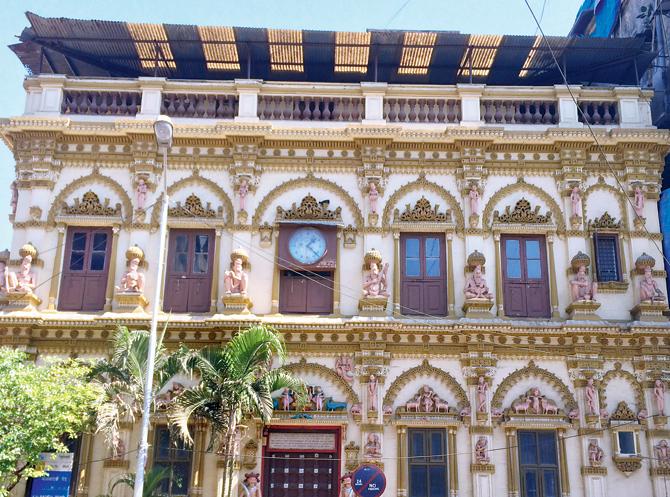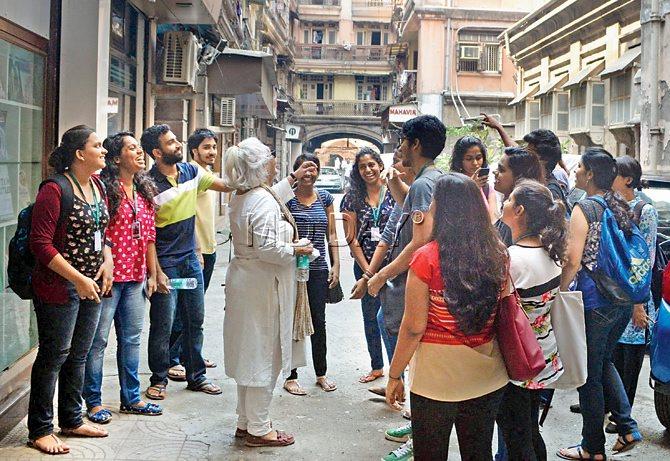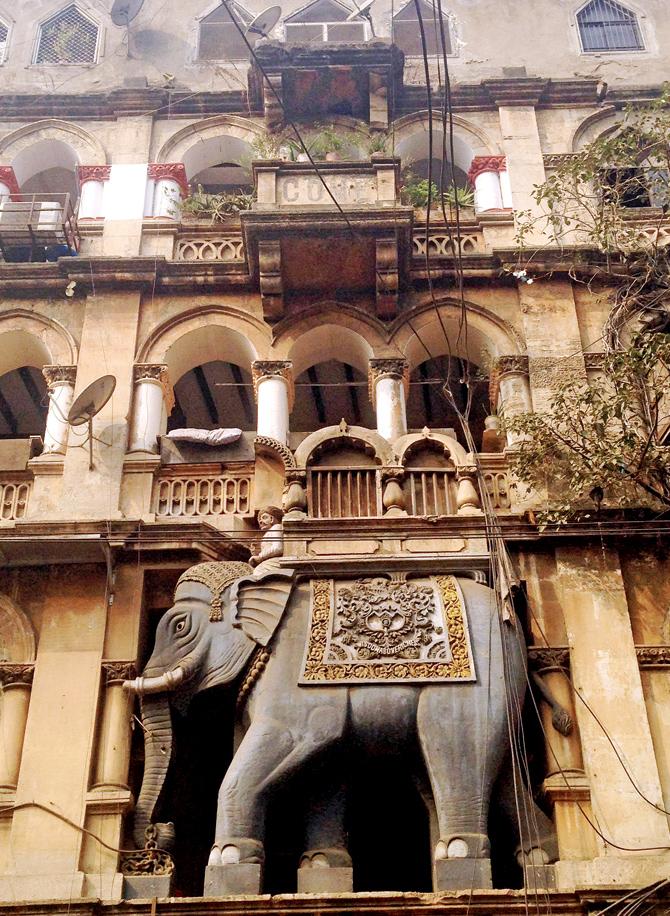One of 20 students from St Xavier's College, who explored Kalbadevi for an Urban History research paper, recounts the experience of Bombay meeting Mumbai, and says, it's your turn now

![]() Earlier this week, when most classrooms at St Xavier’s College were filling up, ours was emptying out. The streets of Kalbadevi were to be our classroom, its sights and sounds our audio visual aids, its heritage and history, the subjects of our study. Egged on by our professor Dr Fleur D’Souza, 20 Third Year students of History took up a research project for their paper on Urban Heritage that attempted to excavate some of this history.
Earlier this week, when most classrooms at St Xavier’s College were filling up, ours was emptying out. The streets of Kalbadevi were to be our classroom, its sights and sounds our audio visual aids, its heritage and history, the subjects of our study. Egged on by our professor Dr Fleur D’Souza, 20 Third Year students of History took up a research project for their paper on Urban Heritage that attempted to excavate some of this history.

Dwarkadish Temple is a fine example of vernacular architecture. Pic Courtesy/Sachaet Raj
ADVERTISEMENT
In November 2015, we began our research about Kalbadevi. It formed part of the ‘Native Town’, as the British called it — the unplanned settlement outside the walls of the Bombay Fort. After the fire that ravaged the fort in 1803, the colonial authorities “encouraged” the proliferation of native tenements outside its walls, and the neighbourhood grew, becoming in the 19th century a collage of architectural styles, and social and ethnic groups.

The group at Bhiwandiwala Terrace on J Shankerseth Road. Pic/Datta Kumbhar
After extensive research, we decided to visit this neighbourhood. Some of our classmates briefed us on their areas of study that shared a connect: Jibran Setalvad-Anand gave us an overview of Kalbadevi’s history in context of its neighbourhood, while Sakina Mamuwala offered insight into the Bohri community’s role in developing the area, and the city. Leo Kallery and Omprasad Mahapatra chronicled the sports and trophy shops that dot Dhobi Talao and Kalbadevi.

Bhangwadi. Pic Courtesy/Sachaet Raj
Stop 1: We started at Metro cinema. Sneha Rego shared that Metro Goldwyn Mayer built this Art Deco- styled cinema in 1938. It became a landmark not just for luxury but also for the city’s urban geography.
Stop 2: Taking the subway to the Framji Cowasji Institute, I shared about its distinct features that confirmed its classical revival style. It was built atop what was once Dhobi Talao. lending its name to the area, as is commemorated by a plaque.

Wolfing down a sumptous breaker at Kyani’s. Pic/Datta Kumbhar
Stop 3: Kyani’s, the century-old Irani cafe, was our next stop. Over bun maska and keema pao, we discussed the history of a few iconic institutions nearby, like Furtados, (Sonali Peres and Living Kashugnao), St Xavier’s School (Abhilasha Singh) and Kyani’s (Simran Galipothu and Aroma Khan). Kyani’s owner Farrokh Shokri explained how the rise of beer bars in the last half century was pivotal to the decline of Irani cafés.
Stop 4: Jer Mahal that housed Kyani’s is an exemplar of the ‘Vernacular’ style of architecture, and along with Framji Cowasji Institute and Metro Cinema, trio of buildings showcase diverse architecture within a tiny radius.
Jer Mahal, as Naomi Fernandes and Vanessa D’Souza discovered, is home to a unique socio-cultural arrangement: the Goan residential club or Kudd. These clubs provide cheap accommodation to Goan men, but what makes them intriguing is their structure; each kudd caters to a Goan village. For example, Assanora and Karnala have clubs in the Mahal, each with its patron saint, like St Lawrence for Karnala. Only male villagers can live in the corresponding kudd. En route, Nicola Perreira had us stop at the Dias family owned-David and Company, invitation card makers and stockists of religious goods draw customers across faiths.
Stop 5: We walked towards Princess Street (now Shamaldas Gandhi Marg), towards Dawa Bazaar. Here, Priya Beck and Stacey D’Mello took us to through this bazaar that stocks homeopathic, allopathic, traditional, unani and ayurveda medicines, as well as medical equipment. This market runs from Marine Lines to Crawford Market.
Stop 6: Down Princess Street, we arrived at its intersection with Kalbadevi Road, where we spotted the 99-year-old Indian Art Studio. This time machine, owned by the Chheda family, wowed us with their collection of vintage black-and-white photos, antique furniture, and a basement photo studio. Meanwhile, Prachi Bhagwat and Shaun D’Souza shared about the adjacent streets’ legacy; some named after martyrs of the freedom movement like Babu Genu, others after English princesses (Princess Street), and renamed later after leaders of Junagadh’s struggle (Shamaldas Gandhi).
Stop 7: We walked down Kalbadevi road, stopping at Bhangwadi and Bhatia Mahajanwady (sic) and Swadeshi Market, which Deepti Anand and Ann Peter had documented along with Kalbadevi’s other cotton textile markets, Mangaldas and Mulji Jetha. We spotted the indistinct temple that gives Kalbadevi its name and the larger, more architecturally striking, but the lesser-known, Dwarkadhish temple built in 1875.
Four hours had passed, as we soaked in a cosmopolitan slice of the old city. The conservation and neglect of its built heritage surprised us in good and not-so-good ways. It’s up to us to ensure that this unique microcosm isn’t allowed to fade out.
 Subscribe today by clicking the link and stay updated with the latest news!" Click here!
Subscribe today by clicking the link and stay updated with the latest news!" Click here!







